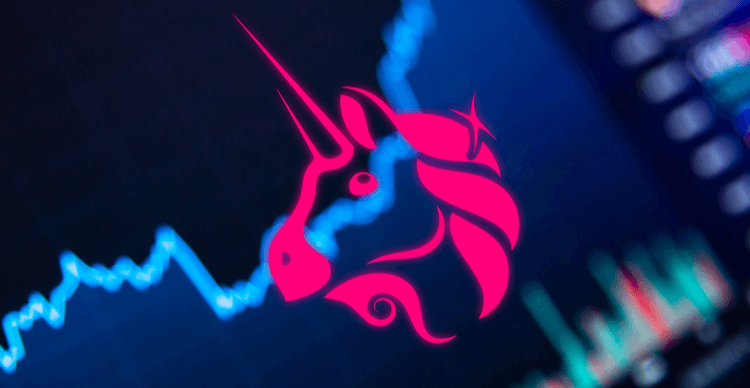U.S. space partnerships with Russia face ‘greatest challenge’ with Ukraine invasion, executive says
For more than two decades, the space agencies of the United States and Russia have been partners through the International Space Station, but the latter nation’s invasion of Ukraine threatens to end that long-standing cooperation.
“The ISS program has led a charmed life” and “has overcome all sorts of political and technical issues,” but “we now face our greatest challenge,” Voyager Space president Jeff Manber told CNBC.
Manber has extensive experience in the two countries’ space dealings, dating back to his time leading the U.S. subsidiary of Russian manufacturer Energia in the 1990s. Manber does not believe the partnership is immediately in jeopardy, but Russian space agency Roscosmos has yet to renew its role beyond 2024 – even as the U.S. prepares to extend ISS operations to 2030.
“The challenge of renewal past 2024 has never been greater,” Manber said.
For now, NASA said in a statement that the agency “continues working with all our international partners, including the State Space Corporation Roscosmos, for the ongoing safe operations of the International Space Station.” Currently there are seven people on board the ISS: Five astronauts – four American and one German – and two Russian cosmonauts.
President Joe Biden announced wide-reaching economic sanctions against Russia on Thursday afternoon, specifically mentioning that the penalties will “degrade their aerospace industry, including the space program.” Biden did not reference the ISS partnership in his speech, and NASA’s statement said that “the new export control measures will continue to allow U.S.-Russia civil space cooperation.”
“No changes are planned to the agency’s support for ongoing in orbit and ground station operations,” NASA said.
Partnerships
The ISS is physically divided into two sections, the United States Orbital Segment and the Russian Orbital Segment. The U.S. and Russia keep the research laboratory continuously staffed with astronauts and cosmonauts, with the roles of each nation’s segment mutually dependent on the other – in ways ranging from life support systems to thrusters that keep the ISS in orbit.
Manber explained the situation simply, saying “it would be a huge technical challenge to continue the International Space Station without the Russian contributions.” He also noted that it’s “correct” that keeping the ISS operational without Russia would be very costly, likely on the order of tens of billions of dollars.
The future of the ISS, with or without Russia, depends on Congress for approval – a fact Manber emphasized. The ISS has historically had strong support from key representatives in Congress and, prior to Russia’s invasion, many in the space industry expected it to continue to operate until 2030.
Manber emphasized that Congressional scrutiny could come as a result of the comments by Dmitry Rogozin, the head of the Russian space agency. In a series of tweets, Rogozin responded to President Biden’s announcement of sanctions by questioning whether Russia would continue to cooperate on the ISS by the beginning of 2023 and saying the U.S. sanctions could lead to “monstrous consequences,” such as the ISS de-orbiting.
“Dmitry is a colorful guy … he’s a very loyal politician to Putin and to his country,” Manber said, adding that “if he continues to put out on Twitter political comments toward this current situation, it might elevate the space agencies into the political arena. And Congress might look at this and say: ‘why the heck are we working with this agency?'”
The ISS conundrum has already drawn the attention of one traditionally uninvolved representative, with Texas Congressman Dan Crenshaw tweeting that it’s “time to replace the Russians on the International Space Station.”
Manber also highlighted that European partners have long been “the chief supporters for cooperation with Russia” when it comes to space.
“But if the Germans and the French and the Italians and others are shivering through the winter of 2024, they are not going to be warm toward cooperation with Russia,” Manber said.
Trade
Russia and Ukraine each play major roles in the global space industry, both buying and selling everything from rockets to spacecraft components.
“The major manufacturers in Russia rely on Western electronic components for the launch vehicles and other components of their contribution to ISS,” Manber said. “It is possible that, without [the Biden administration] giving it too much thought that [these sanctions] could force Russia to withdraw from the ISS program.”
U.S. companies also manufacture in Ukraine – with Northrop Grumman’s Antares rocket one such example. The first stage of Antares is built and assembled in Ukraine, and the rocket is powered by Russian-built RD-181 engines. Northrop Grumman did not respond to CNBC’s requests for comment on potential Antares supply chain disruptions, but the company has previously warned shareholders in disclosures that “unstable geopolitical conditions, including in Russia and Ukraine” are among its risks.
The growing space industry in the U.S. has also been “grappling with” foreign national entrepreneurs and investors, Manber said, with space transportation company Momentus and launch company Firefly Aerospace two such examples that fell under scrutiny by the inter-agency Committee on Foreign Investment in the United States (CFIUS). In the case of Momentus, the Russian founder Mikhail Kokorich was forced to fully divest his ownership of the company. Firefly’s main backer – Ukrainian investor Max Polyakov – said earlier this month that he was pushed out by CFIUS, with U.S. private equity firm AE Industrial Partners expected to acquire “a significant stake” from Polyakov’s Noosphere Ventures.
“With Momentus and Firefly, the United States has taken very strong action to make sure that who they see as undesirables are not involved and providing space services to the United States government,” Manber said. “Today’s crisis is only going to accelerate the fears of the American agencies as to who is involved in commercial space.”
Crew transportation with SpaceX, Soyuz
For nine years, the U.S. relied solely on Russia to transport astronauts to the ISS after the retirement of the Space Shuttle. But that dependence dramatically changed in 2020, when SpaceX’s Crew Dragon spacecraft delivered a pair of NASA astronauts under the agency’s Commercial Crew program, beginning the company’s now regular flights to the ISS.
“Commercial Crew is priceless,” Manber said. “Could you imagine relying on Russia today to ferry our astronauts and cargo as much as we did?”
Retired NASA astronaut Terry Virts was one of those who flew on Russia’s Soyuz spacecraft during the gap in U.S. access to the ISS. Virts tweeted an image of Russia bombing Ukraine in 2015 that he took from the space station, the year following the 2014 annexation of Crimea, and recalled his experience in an interview with CNBC.
“Bombs at nighttime look red from space, I can tell you that – and you could see them flashing,” Virts said.
“It’s a devastating day” to see Russia launch an invasion of Ukraine, Virts said. He emphasized that “hanging out with the Russian cosmonauts was my favorite part of my time in space and training in Russia was my favorite part of the whole mission.”
“I’m afraid that we’re getting to a red line that needs to be discussed openly. When you say out loud the things that Putin has done, we need to discuss that red line,” Virts added.
Roscosmos has yet to fly a cosmonaut on SpaceX’s Crew Dragon but the agencies have been working toward an agreement that would see Russia’s Anna Kikina flying on the Crew-5 mission in the second half of this year. As part of what is effectively a swap deal, a NASA astronaut is anticipated to fly on a future Soyuz mission. Manber said he expects NASA would like that to continue to move forward, although it represents another piece of the partnership at jeopardy.
“The question will be Congress – and how much heat is Congress going to put on NASA,” Manber said.
Private space stations won’t be ready by 2024
The potential for the ISS not to continue past 2024 means that NASA and the space industry are now “confronting the very real possibility of a space station gap,” Manber said.
Late last year, NASA awarded over $400 million in contracts under the Commercial LEO Destinations (CLD) project for early development of three private space stations. Notably, Manber is a part of Voyager Space, which is the majority shareholder of X.O. Markets, the parent company of Nanoracks – one of the three contract winners and developing a space station called Starlab.
But the earliest any of these private space stations would be operational is 2027, potentially years after the ISS would fall out of orbit if Russia does not continue as a partner. While Manber said “the private sector will come up with the overwhelming majority” of the funding for each of these private space stations, he says it’s critical that the White House and Congress swiftly back the CLD project.
“We have to accelerate the government funding and make sure it has full Congressional support, so we don’t cede [low earth orbit] to the Russians and Chinese,” Manber said.





